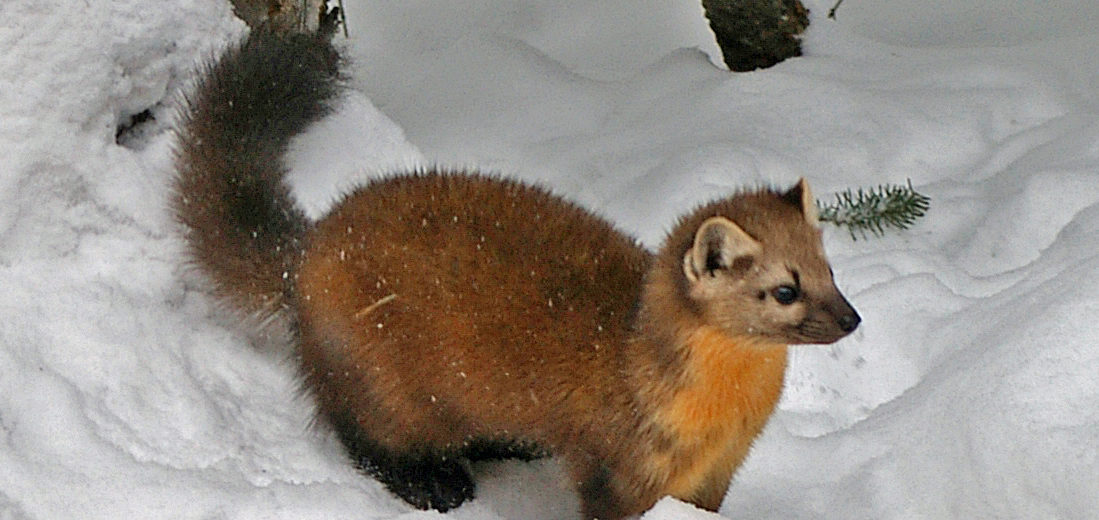
The American marten in a member of the weasel family, like the skunk, mink, stoat, ferret, beaver, and more. There are 13 known subspecies of American marten that are native to North America. They prefer mature, northern region forests that are populated primarily with aspen, birch, firs, pines, and spruce trees as these types of forests provide ample hiding spots. They have many nicknames, like pennant, sable, fisher cat, honey dog, kharza, and others. The marten was extensively hunted through the 19th and 20th centuries for their fur. This caused a huge decline in their numbers. Today their numbers are stable and the American marten is listed as Least Concern by the IUCN.
First the Stats…
Scientific name: Martes americana
Weight: Up to 3.1 lbs.
Length: Up to 28 inches, plus their 7.7 inch tail
Lifespan: Up to 15 years
Now on to the Facts!
1.) American martens are primarily nocturnal (active at night).
2.) They prey on mice, reptiles, squirrels, hares, insects, small birds, and will also eat fruit and nuts; preferring to hunt in a crepuscular (active at dawn and dusk) time frame. They will even kill and eat other martens.
3.) Wolves, coyotes, bobcats, foxes, hawks and eagles all prey on martens.
4.) Not only can they speedily traverse land and trees, but they can also swim very well.
5.) These cute critters communicate via chuckles, huffs, screams, body language, and scent marking.
But wait, there’s more on the American marten!
6.) The American marten is solitary; only coming into contact with other martens to fight for territory and to breed.
7.) Martens are polygynous (mate with more than 1 female).
Did you know…?
A group of martens is called a richness.
8.) Breeding season is between June – August.
9.) Females undergo delayed implantation for up to 200+ days. This is where they can delay pregnancy until the time is right to birth her kits.
10.) A female marten will typically give birth to 1 – 5 kits each season.
Now a Short American Marten Video!
Also, check out the Critter Science YouTube channel. Videos added frequently!
Want to suggest a critter for me to write about? Let me know here.




Leave a Reply